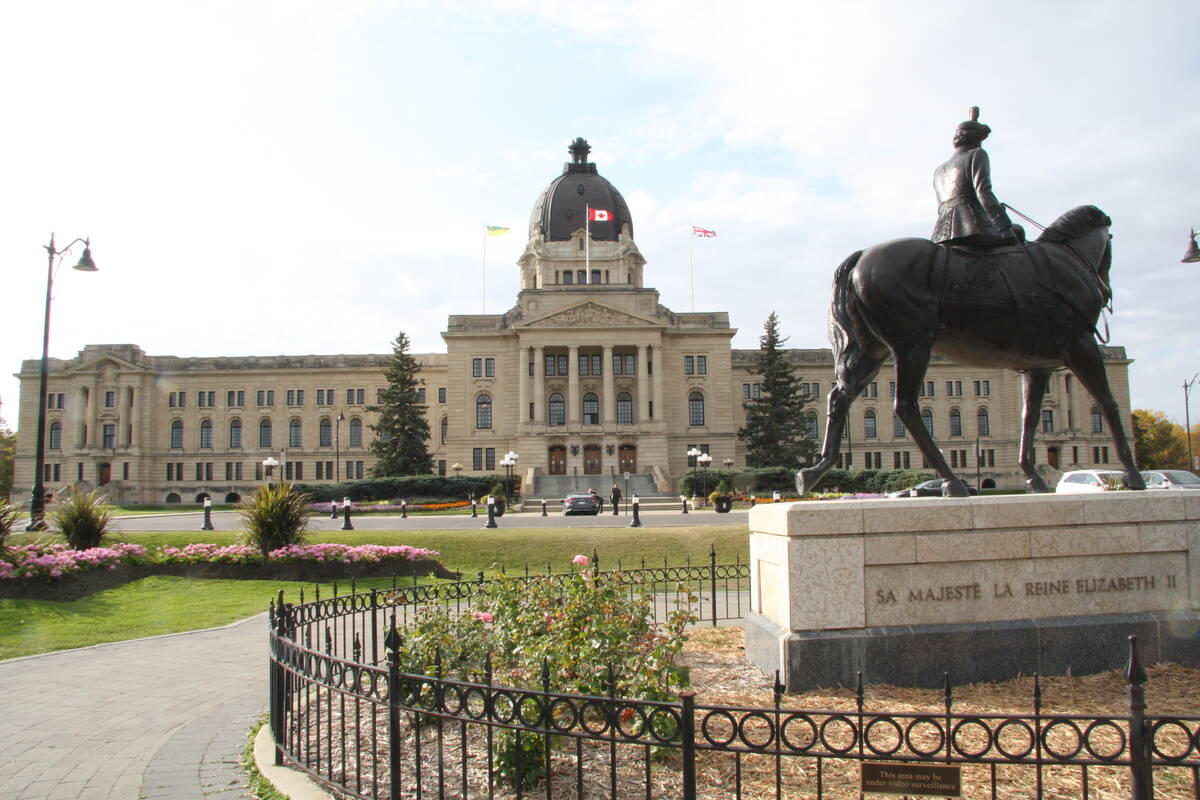Prime minister Stephen Harper did something Oct. 14 that no Conservative leader has done in 20 years. He won a second consecutive government.
Results from early this morning had Harper’s Conservatives winning 143 seats in the 308 seat Parliament. The Opposition was splintered between a weaker Liberal caucus, a stronger New Democratic Party caucus and a strong Bloc Québécois result.
But Harper fell short of his goal of a majority government and promised to work with all opposition parties to resolve the turmoil in Canada’s economy, imported from foreign economies.
Read Also

Saskatchewan throne speech promises strong economy
Saskatchewan’s legislative agenda for the coming year will focus on meeting the challenges of new world trading relationships, said the speech from the throne.
“This is a time for us to set aside partisan consideration to work together for the benefit of Canadians,” Harper told an election night crowd in Calgary.
But for some observers, the stronger majority and weakened Liberal opposition gives Harper an opportunity to achieve in the next year some controversial goals he has promised and that could make it through Parliament.
Dawson Creek, B.C., farmer Ross Ravelli said late Oct. 14 he hopes the Conservative government acts quickly to honour the campaign commitment to end the Canadian Wheat Board’s monopoly on sales of wheat and export barley.
“I hope they bring this issue forward in the first session of Parliament and with the Liberals worrying more about leadership than an issue of the CWB where they have no seats, I believe they could get it through,” said the president of Grain Growers of Canada. “I certainly hope so.”
David Taras, political analyst and chair of the faculty of communication and culture at the University of Calgary, said Ravelli has a point.
“Now is the time to get through their contentious policies,” he said from Calgary. “Given the numbers in the House, nobody is going to contest them for at least the next year. Until the Liberals sort out their leadership, nobody will be bringing the Conservatives down.”
In the election that featured a voter turnout of less than 60 percent, the lowest in history, the Conservatives increased support in Atlantic Canada, held their own in Quebec with 10 seats, increased support in suburban Ontario, all but swept the Prairies and sharply increased their British Columbia caucus.
The Conservative popular vote went up almost two percentage points to 37.7
In contrast, while hanging onto 77 seats, Liberal leader Stéphane Dion lost 26 seats from the 2006 election result and led the party to its lowest share of popular vote in the history of Canada at 26.3 percent, a drop of almost four percent from 2006.
In light of the result, Dion’s two-year leadership will be challenged, possibly as early as May when Liberals are slated to hold a convention in Vancouver.
The NDP under Jack Layton increased its seat count to 37 from 30, but failed to break through the promised barrier of the best-ever result, 43 seats won in 1988. The party was shut out of most of rural Canada except in a smattering of seats in interior British Columbia and northern Ontario.
For the third election in a row, the NDP failed to win a seat in Saskatchewan where as recently as 1988, it held 10 of 14 seats. Their closest race was in Saskatoon-Rosetown-Biggar where former National Farmers Union president Nettie Wiebe came within 200 votes of winning the seat from the Conservatives.
Green Party leader Elizabeth May lost her bid for a seat in Nova Scotia and saw her support settle at less than eight percent despite election polls that had her running as high as 12 percent.
“The Green bubble burst and you have to see them as one of the election losers,” said Taras from the University of Calgary.
Canadian Federation of Agriculture vice-president Ron Bonnett said late on election night that the renewed Conservative mandate with continued strong support from farmers means the new Conservative government will have to quickly grapple with the issue of whether its new farm safety net program is adequate.
“In volatile economic times, how do we build a safety net program that will ensure stability and profitability?” said Bonnett. “The CFA will be contacting government members almost immediately to talk to them about whether what we have is adequate for the times we are living in.”
With the loss of Liberal rural seats in Prince Edward Island, New Brunswick and northern Ontario, the rural-urban divide in the new Parliament will be even more stark.
Outside of Quebec where the BQ, with 49 seats, continued to hold many rural seats, the Conservatives are the party of rural Canada.
But Taras made the point that with Conservative expansion into suburban ridings in Ontario and British Columbia and into ethnic areas of major cities, the new Conservative caucus will be far more diverse and less dominated by the rural voices within it.
“I think it is fair to say this election has broadened the Conservative base and therefore reduced the power of the rural voice in caucus,” he said. “To grow, the attention will have to be on the issues raised by those new urban voices.”














